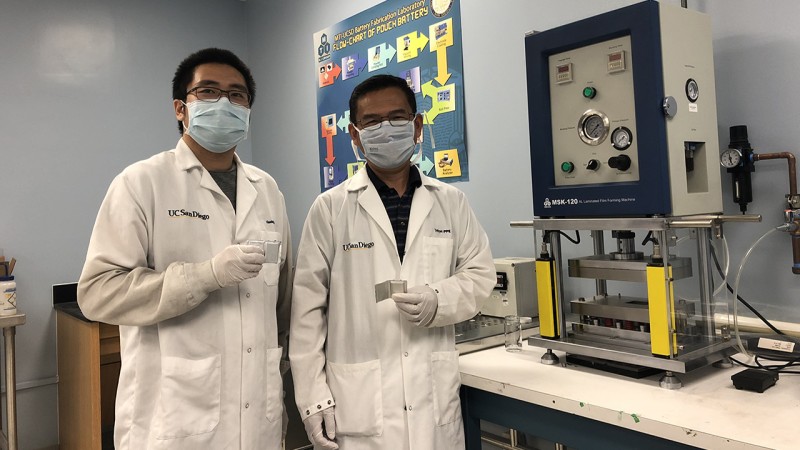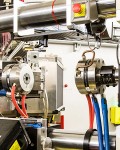By Katherine Connor (courtesy of UC San Diego)
Scientists at UC San Diego have discovered a new anode material that enables lithium-ion batteries to be safely recharged within minutes for thousands of cycles. Known as a disordered rocksalt, the new anode is made up of earth-abundant lithium, vanadium and oxygen atoms arranged in a similar way as ordinary kitchen table salt, but randomly. It is promising for commercial applications where both high energy density and high power are desired, such as electric cars, vacuum cleaners or drills.
The study, jointly led by nanoengineers in the labs of Professors Ping Liu and Shyue Ping Ong, was published in Nature on September 2.
Currently, two materials are used as anodes in most commercially available lithium-ion batteries that power items like cell phones, laptops and electric vehicles. The most common, a graphite anode, is extremely energy dense—a lithium ion battery with a graphite anode can power a car for hundreds of miles without needing to be recharged. However, recharging a graphite anode too quickly can result in fire and explosions due to a process called lithium metal plating. A safer alternative, the lithium titanate anode, can be recharged rapidly but results in a significant decrease in energy density, which means the battery needs to be recharged more frequently.
This new disordered rocksalt anode—Li3V2O5 —sits in an important middle ground: it is safer to use than graphite, yet offers a battery with at least 71% more energy than lithium titanate.
SNS, APS, and ALS are DOE Office of Science User Facilities. UT-Battelle LLC manages ORNL for the DOE Office of Science. The Office of Science is the single largest supporter of basic research in the physical sciences in the United States and is working to address some of the most pressing challenges of our time. For more information, please visit energy.gov/science.







